Results 8,501 to 8,510 of 12094
Thread: Anandtech News
-
-
08-13-18, 07:44 PM #8502
Anandtech: NVIDIA Reveals Next-Gen Turing GPU Architecture: NVIDIA Doubles-Down on Ra
Moments ago at NVIDIA’s SIGGRAPH 2018 keynote presentation, company CEO Jensen Huang formally unveiled the company’s much awaited (and much rumored) Turing GPU architecture. The next generation of NVIDIA’s GPU designs, Turing will be incorporating a number of new features and is rolling out this year. And while the focus of today’s announcements is on the professional visualization (ProViz) side of matters, we expect to see this used in other upcoming NVIDIA products as well. And by the same token, today’s reveal should not be considered an exhaustive listing of all of Turing’s features.
More...
-
08-13-18, 10:00 PM #8503
Anandtech: NVIDIA Announces Turing-Powered Quadro RTX Family: RTX 8000, 6000, & 5000
Alongside today’s announcement of their new Turing GPU architecture, NVIDIA has also announced the first three products that will use the first Turing GPU. Breaking from tradition, NVIDIA has announced the workstation-class Quadro parts first. Part of the new Quadro RTX family, the Quadro RTX 8000, RTX 6000, and RTX 5000 are NVIDIA’s fastest workstation cards yet, and are set to arrive in the fourth quarter of this year.
For complete details on the Turing architecture, please see our companion article. But in short Turing is an evolution of the Volta architecture, taking everything that made the GV100 fast, and then improving on it. For professional visualization (ProViz) users, the big news here is that the cards feature hardware ray tracing acceleration, thanks to the combination of NVIDIA’s new RT cores, and the tensor cores brought over from Volta. Used together, the new cores can be used to speed up ray tracing, and then implement further post-processing tricks to cut down on the amount of work required to generate a photorealistic image.
The new GPUs and resulting Quadro cards are also the first NVIDIA cards to get GDDR6 memory – up to 48GB of it – doubling the amount of memory available versus NVIDIA’s Quadro P6000, and also offering a significant bandwidth increase at the same time. Going one step further, NVIDIA has also included support for NVLink, their proprietary multi-GPU cache coherent interlink, which will allow Quadro RTX cards to be installed in pairs and share their frame buffer memory. NVLInk isn’t as good as local memory, but with a reported 100GB/sec of bandwidth between the two cards, it’s also nothing to sneeze at.
As a result of these features NVIDIA is aiming very hard at the visual effects industry (e.g. movie and TV production), as they are some of the most demanding users in terms of performance needs, and have some of the deepest pockets as well. NVIDIA of course is no stranger to this market, but this is the biggest play they’ve ever made for it. They greatly want to bend users away from CPU-based ray tracing farms and on to more compact GPU farms.
This also means that NVIDIA has been pushing very hard behind the scenes to get software ready for their cards and the underlying RTX ray tracing functionality. While we’re still in the very early days, NVIDIA has already lined up Autodesk, Adobe, the Chaos Group, Dassault Systèmes, and of course Epic Games (among others) to support the technology in some fashion. There’s still a definite chicken-or-the-egg element in play, but NVIDIA is making a concentrated effort to get the proverbial eggs out there.
All told, there are 3 Quadro RTX cards initially launching. The Quadro RTX 8000 and RTX 6000 are nearly spitting images of each other; both offer the same GPU performance and memory bandwidth thanks to the combination of 4608 CUDA cores, 576 tensor cores, and GDDR6 memory. The difference between the two is that the RTX 8000 is equipped with a full 48GB of VRAM (24 chips in a clamshell configuration), while the RTX 6000 has just 24GB of VRAM. It’s only in the final card of the stack, the RTX 5000, that NVIDIA offers a lower performing card for less money. This partially-enabled card gets 3072 CUDA cores, 384 tensor cores, and 16GB of GDDR6.NVIDIA Quadro Specification Comparison RTX 8000 RTX 6000 RTX 5000 GV100 CUDA Cores 4608 4608 3072 5120 Tensor Cores 576 576 384 640 Boost Clock ~1730MHz? ~1730MHz? ? ~1450MHz Memory Clock 14Gbps GDDR6 14Gbps GDDR6 14Gbps GDDR6 1.7Gbps HBM2 Memory Bus Width 384-bit 384-bit 256-bit 4096-bit VRAM 48GB 24GB 16GB 32GB ECC ? ? ? Full Half Precision 32 TFLOPs? 32 TFLOPs? ? 29.6 TFLOPs Single Precision 16 TFLOPs 16 TFLOPs ? 14.8 TFLOPs Tensor Performance 500T OPs
(INT4)500T OPs
(INT4)? 118.5 TFLOPs
(FP16)Ray Performance 10 GRps 10 GRps 6 GRps N/A TDP ? ? ? 250W GPU Unnamed Turing Unnamed Turing Unnamed Turing GV100 Architecture Turing Turing Turing Volta Manufacturing Process ? ? ? TSMC 12nm FFN Launch Price $10,000 $6,300 $2,300 $9,000 Launch Date Q4 2018 Q4 2018 Q4 2018 March 2018
At this point we’re still waiting on more information on power consumption for these cards. But the images NVIDIA has released thus far shows them using a typical NVIDIA blower configuration, so expect sub-250W parts.
Meanwhile NVIDIA has confirmed that all of the cards come with 4 DisplayPort 1.4 outputs. Along with that, all of the cards will feature a 5th output: a VirtualLink-capable USB Type-C port. The recently introduced VirtualLink standard is a USB-C alt mode, and it allows a single cable to carry all of the video, data, and power a VR headset requires, allowing headsets to be directly tethered to a video card without requiring multiple cables. There are no VirtualLink-capable headsets yet, but with Oculus, Valve, and Microsoft all backing the standard, it will only be a matter of time.
Wrapping things up, the new Quadro RTX cards will be available in Q4 of this year. Prices start at $2,300 for the RTX 5000, and quickly get more expensive from there. An RTX 6000 will set buyers back $6,300, while the flagship RTX 8000 will be a full $10,000.
More...
-
08-14-18, 08:35 AM #8504
Anandtech: Khronos Group Releases Neural Network Exchange Format 1.0, Showcases First
Today at SIGGRAPH the Khronos Group, the industry consortium behind OpenGL and Vulkan, announced the ratification and public release of their Neural Network Exchange Format (NNEF), now finalized as the official 1.0 specification. Announced in 2016 and launched as a provisional spec in late 2017, NNEF is Khrono's deep learning open format for neural network models, allowing device-agnostic deployment of common neural networks. And on a flashier note, StarVR and Microsoft are providing the first public demonstration of Khronos' OpenXR, a cross-platform API standard for VR/AR hardware and software.
With a two-part approach, OpenXR's goal is VR/AR interoperability encompassing both the application interface layer (e.g. Unity or Unreal) and the device layer (e.g. SteamVR, Samsung GearVR). In terms of SIGGRAPH's showcare, Epic's Showdown demo is being exhibited with StarVR and Windows Mixed Reality headsets (not Hololens) through OpenXR runtimes, via an Unreal Engine 4 plugin. Given the amount of pre-existing proprietary APIs, the original OpenXR iterations were actually developed in-line with them to such an extent that Khronos considered the current OpenXR more like a version 2.0.
As for NNEF, the key context is one of the side effects of the modern deep learning (DL) boom: the vast array of valid DL frameworks and toolchains. In addition to those frameworks, we've seen that any and all pieces of silicon have been pressed into action as an AI accelerator: GPUs, CPUs, SoCs, FPGAs, ASICs, and even more exotic fare. To recap briefly, after a neural network model is developed and finalized by training on more powerful hardware, it is then deployed for use on typically less powerful edge devices.
For many companies, the amount of incompatible choices makes 'porting' much more difficult between any given training framework and any given inferencing engine, especially as companies implement more and more specialized hardware, datatypes, and weights. With NNEF, the goal is providing an exchange format that allows any given training framework to be deployed onto any given inferencing engine, without sacrificing specialized implementations.
Today's ratification and final release is more of a 'hard launch' with NNEF ecosystem tools now available on GitHub. When NNEF 1.0 was first launched as a provisional specification, the idea was to garner industry feedback, and after those changes NNEF 1.0 has been released as an official standard. In that sense, while both initiatives are open-source, NNEF differs from the similar Open Neural Network Exchange (ONNX) that was started by Facebook and Microsoft, which is organized as a open-source project. And where ONNX might focus on interchange between training formats, NNEF continues to be designed for variable deployment.
Current tools and support for the standard include two open source TensorFlow converters for protobuf and Python network descriptors, as well as a Caffe converter. Khronos also notes tool development efforts from other groups: an open source Caffe2 converter by Au-Zone Technologies (due Q3 2018), various tools by Almotive and AMD, and an Android NN API importer by a team at National Tsing-Hua University of Taiwan. More information on the final NNEF 1.0 spec can be find on its main page, including the full open specification on Khronos' registry.
Also announced was the Khronos Education Forum, spurred by increasing adoption and learning of Vulkan and other Khronos standards/APIs, the former of course not known for a gentle learning curve. One of the more interesting tidbits of this initiative is access to the members of the various Khronos Working Groups, meaning that educators and students will get guidance from the very people who designed a given specification.
Gallery: Khronos SIGGRAPH 2018 Updates Presentation Deck





More...
-
08-15-18, 06:26 AM #8505
Anandtech: Samsung Releases Exynos Modem 5100 - First Multi-Mode 5G Modem
Today Samsung announced its new Exynos Modem 5100 – what it claims to be the industry’s first multi-mode 5G modem.
While over the last few months, and years, we’ve heard a lot of news regarding 5G modems from various vendors, in particular Qualcomm’s new X50 modem – Samsung S.LSI tends to avoid much public PR fanfare until its products are near release. We’ve heard rumours about the new 5G modem being presented earlier this year at MWC but couldn’t get any more details out from Samsung.
Today’s launch differs in the sense that the Exynos Modem 5100 claims to be the first multi-mode modem solution – meaning the new chipset is a full standalone solution supporting the new 5G sub-6GHz and mmWave as well as all existing standards, including 2G GSM/CDMA, 3G WCDMA, TD-SCDMA, HSPA, and 4G LTE. This comes in contrast with Qualcomm's X50 modem which requires the SoC modem to provide the legacy connectivity option in order to provide platform multi-mode functionality. Where Samsung would have a definite advantage is integration into products that don't implement any connectivity in the first place.
In terms of specifications, the new modem supports 8x carrier aggregation in both 5G NR as well as LTE – it promises to achieve LTE category 19 download speeds of up to 1.6Gbps, 5G sub-6GHz speeds of up to 2Gbps and 5G mmWave speeds of up to 6Gbps. For 5G NR this means we’re working with 8x 100MHz channels summing up to 800MHz of bandwidth, versus 8x 20MHz / 160MHz for LTE radios.
Uplink bandwidth is implemented with up to 2x carrier aggregation in 5G NR and LTE. For both downlink and uplink, the mmWave connectivity is implemented with 64-QAM versus 256-QAM for the sub-6GHz bands.
The new modem comes with accompanying RF IC / radio front-ends, envelope tracker and power management ICs. Samsung implements the Exynos Modem 5100 on a 10LPP manufacturing node – while this might come at a disadvantage to eventual 7nm parts from the competition, Samsung promises commercial availability by the end of 2018, giving Samsung seemingly a lead in terms of time to market if everything pans out as claimed.
Related Reading- Qualcomm Announces New X50 5G Modem, First Gigabit Class LTE Network and Router
- Qualcomm Announces Their First 5G mmWave Antenna Module: QTM052, Coming This Year
- 3GPP Completes First 5G NR Specification For Release 15
- Intel Announces XMM 8060 5G & XMM 7660 Category 19 LTE Modems, Both Due in 2019
- CEVA Announces PentaG 5G NR Modem IP Platform
More...
-
08-15-18, 06:26 AM #8506
Anandtech: Inno3D Releases iChill Memory Modules with RGB LEDs, Up to DDR4-4000
Inno3D is primarily known for its graphics cards featuring highly custom cooling systems, but apparently the company has decided to expand its business beyond that. This week Inno3D introduced its first memory modules carrying its signature iChill brand. The DIMMs will hit the market later this year and will feature speeds of up to DDR4-4000.
Inno3D’s iChill family of memory modules will include 4 GB, 8 GB, and 16 GB DIMMs rated for speeds starting from DDR4-2400 and up to DDR4-4000. The memory sticks will be outfitted with heat spreaders featuring RGB lightbars compatible with the ASUS Aura Sync software. Like enthusiast-class memory modules from a number of other makers, Inno3D’s DIMMs will be covered with a lifetime warranty.
The number of companies offering enthusiast-class memory modules declined in the recent years primarily because of low profitability of such business and high risks. This year the situation changed a bit as Antec and Colorful introduced their first memory modules aimed at enthusiasts. Inno3D is a yet another newcomer who will have to rival established players like ADATA, Corsair, G.Skill, Kingston, and others. Meanwhile, production of memory modules will help Inno3D (and, possibly, its owner PC Partner, which also controls Manli and Zotac) to establish better ties with makers of DRAM. Procuring memory and potentially getting it at lower prices could make Inno3D more competitive on the market of graphics cards as well.
Expect Inno3D to announce detailed specifications of its memory modules in the coming months. Considering highly volatile nature of DRAM pricing, DIMM suppliers tend not to announce MSRPs of their products, so it is likely that prices of Inno3D’s DIMMs will be comparable to prices of similar modules from other makers.
Buy Inno3D GeForce GTX 1050 TI on Amazon.com
Related Reading:
- Colorful to Branch Out to Memory Modules
- Antec Announces Its First Memory Modules
- G.Skill Trident Royal Crystalline DRAM: Premium Gemstone Glamour
- Corsair Announces Vengeance RGB Pro Memory: Up to DDR-4000, 10 RGB LEDs
- G.Skill Unveils 16GB DDR4-4700 Trident Z RGB DRAM Kit: Samung B-die & RGB LED
More...
-
08-15-18, 07:47 AM #8507
Anandtech: An Interview with Lisa Spelman, VP of Intel’s DCG: Discussing Cooper Lake
As part of the summit, we were given an opportunity to sit down with Lisa Spelman, VP of Intel’s Data Center Group and General Manager of Xeon Products, about the new processors. Over the course of 22 minutes, we touched on the new platforms, some of the new features, the progression of the different product families such as 3D XPoint, how Intel is implementing hardware fixes for side channel attacks such as Spectre and Meltdown, as well as some discussion about Intel’s new generation: Raja Koduri and Jim Keller.
More...
-
08-15-18, 09:54 AM #8508
Anandtech: Cooler Master Launches Wraith Ripper Cooler for Threadripper 2 CPUs
Cooler Master has announced its Wraith Ripper, the air cooler that AMD recommends for its latest Threadripper 2 processors. The cooler can dissipate up to 250 W of power and features programmable RGB lighting.
Cooler Master’s Wraith Ripper cooling system for AMD’s Threadripper 2 processors has a dual tower heatsink featuring aluminum fins as well as seven heat pipes. The cooler is outfitted with a 120-mm MasterAir Pro Servo fan that can rotate at speeds up to 2750 RPM and create an airflow of 76.4 CFM. While the cooler is very powerful, it is also relatively compact and therefore does not cause compatibility issues with memory modules, unlike some other “mega coolers” for high-end CPUs.
The manufacturer is especially proud of Wraith Ripper’s mounting system that uses four long screws accessible from the top of the cooler, which greatly simplifies installation procedure of the device.
To make the Wraith Ripper stylish, Cooler Master outfitted it with dual addressable RGB LED strips as well as RGB-lit AMD Ryzen Threadripper logo. Owners can control RGB lighting using the built-in lighting control as well as Cooler Master’s app.
Cooler Master’s Wraith Ripper cooler will be available in September from Amazon and Newegg for an MSRP of $119.99.
Related Reading:Cooler Master Wraith Ripper MAP-D6PN-218PC-R1 CPU Socket AMD TR4 Heat Sink Material Dual tower heatsink, aluminum fins, 7 heatpipes Dimensions 150 × 132.3 × 160.5 mm | 5.9 × 5.2 × 6.3 inches Fan Dimensions 120 × 120 × 25 mm | 4.7 × 4.7 × 1 inches Fan Speed 2750 RPM +/- 10% Fan Air Flow 76.4 CFM Fan Air Pressure 1.65 mm H20 Fan MTTF 490,000 hours Fan Connector 4-pin Fan Power Consumption 3.6 W Warranty 2 years MSRP $119.99
- AMD Teams Up with Cooler Master for ‘Wraith Ripper' Megacooler
- Cooler Master Readies New Thermal Compound with 11 W/mK Conductivity
- Cooler Master Announces ML120R/240R AIO Liquid Coolers: Addressable RGB
More...
-
08-15-18, 03:35 PM #8509
Anandtech: ATP Announces eMMC5.1 3D NAND Storage For Extreme Temperatures
ATP recently introduced its new eMMC storage solutions designed for industrial applications and rough environments. The storage devices are based on 3D NAND memory and can work in SLC and MLC modes, depending on the model.
ATP’s E700p and E600i eMMC 5.1 storage solutions feature capacities ranging from 8 GB to 128 GB. The devices use an HS400 interface and support up to 300 MB/s sequential read speed as well as up to 220 MB/s write speed. The E700p (3D SLC) and E600i (3D MLC) eMMC storage devices feature an LDPC ECC engine and support AutoRefresh and Dynamic Data Refresh functions.
The new eMMC 5.1 products have an industrial operating temperature rating between -40°C and 85°C, which means that they can survive in the most extreme environments. The manufacturer claims that the E700p and E600i have maximum TBW ratings of up to 651 TB and 372 TB, respectively.
The storage products come in 153-ball FBGA package and are backwards compatible with existing eMMC-based devices.
Related Reading:ATP's eMMC 5.1 Storage Devices E700p
PremiumE600i
SuperiorJEDEC Specification v5.1, HS400 Flash Type 3D SLC 3D MLC Density 8 GB to 6 GB 16 GB to 128 GB Bus Speed Modes x1/x4/x8 Sequential Read/Write 300/220 MB/s Random Read/Write 15K / 30K Operating Temperature -40°C to 85°C TBW 651 TB 372 TB VCC (Typical RMS in Read/Write) 130 / 215 VCCQ (Typical RMS in Read/Write) 115 / 105 Package 153-ball FBGA (11.5 × 13.0 × 1.3 mm)
- ATP Launches M.2 NVMe SSDs: 3D MLC, SMI, Extreme Temps, Up to 2.5 GB/s
- SanDisk Announces iNAND 7232: eMMC 5.1, 128GB, and SLC/TLC
- ADATA Launches ISSS314 and IM2P3388 Industrial SSDs: 3D NAND, Extreme Temps
- Transcend Introduces Extreme Temperature DDR4 SO-DIMMs
Source: ATP (via TechPowerUp)
More...
-
08-16-18, 07:13 AM #8510
Anandtech: The Corsair H150i Pro RGB AIO Cooler Review: The Quiet Giant
In today's review we are taking a look at the largest all-in-one liquid cooler Corsair is currently offering, the H150i Pro RGB. The H150i Pro RGB is largely based on previous products that the company introduced last year, with the palpable exception being the huge 360 mm radiator. Also, as its name suggests, the H150i Pro RGB features RGB lighting that is programmable via Corsair's new iCUE software interface.
More...
Thread Information
Users Browsing this Thread
There are currently 21 users browsing this thread. (0 members and 21 guests)





 Quote
Quote
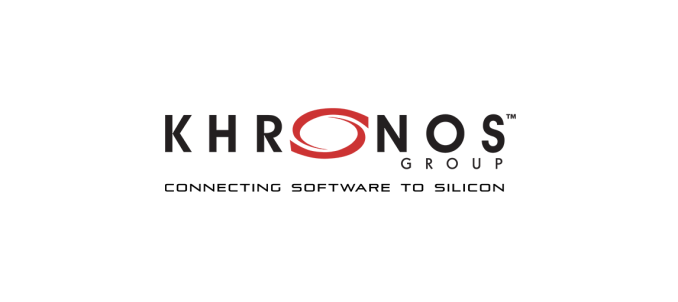
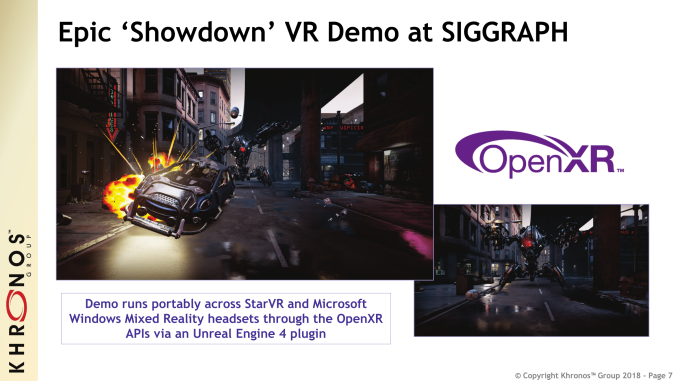
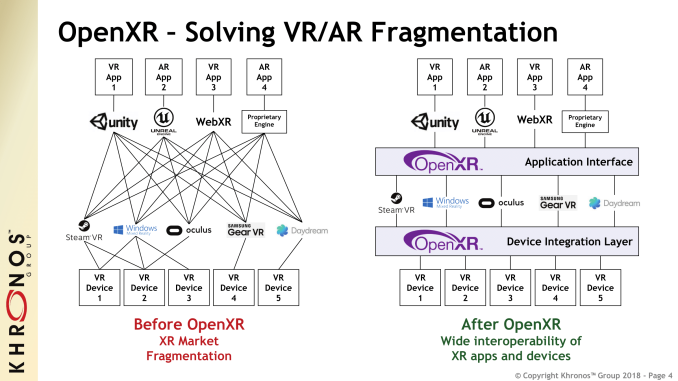

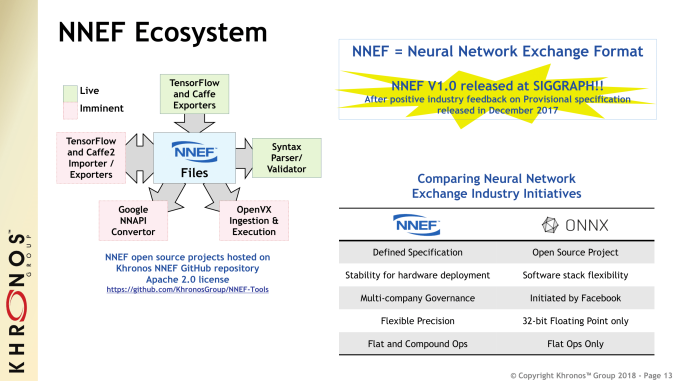
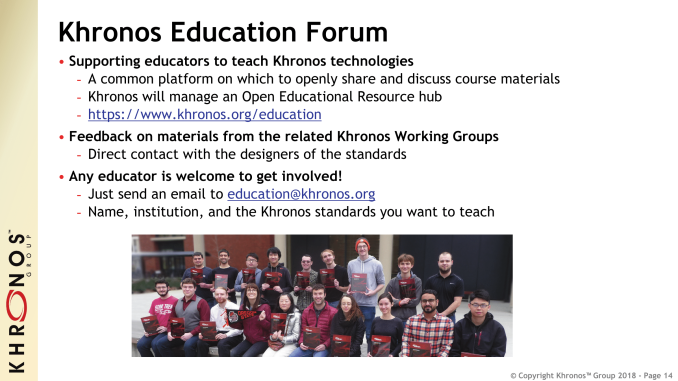

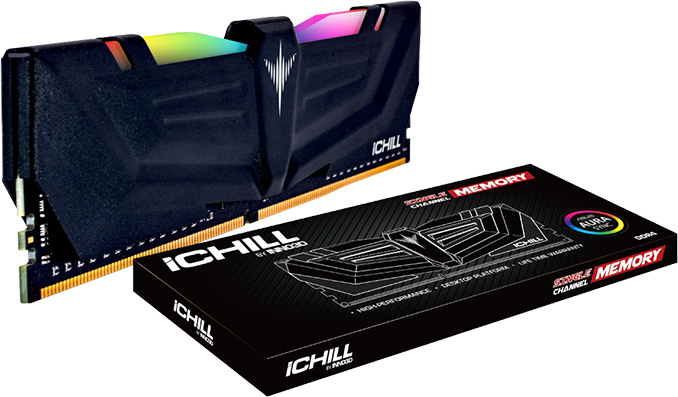

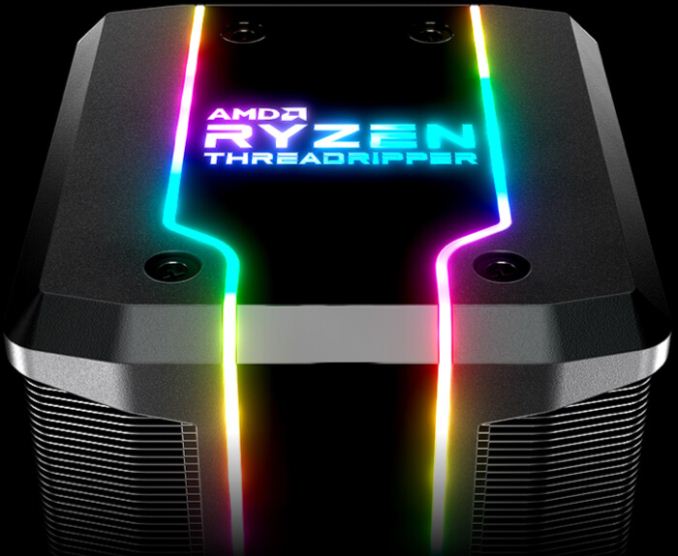
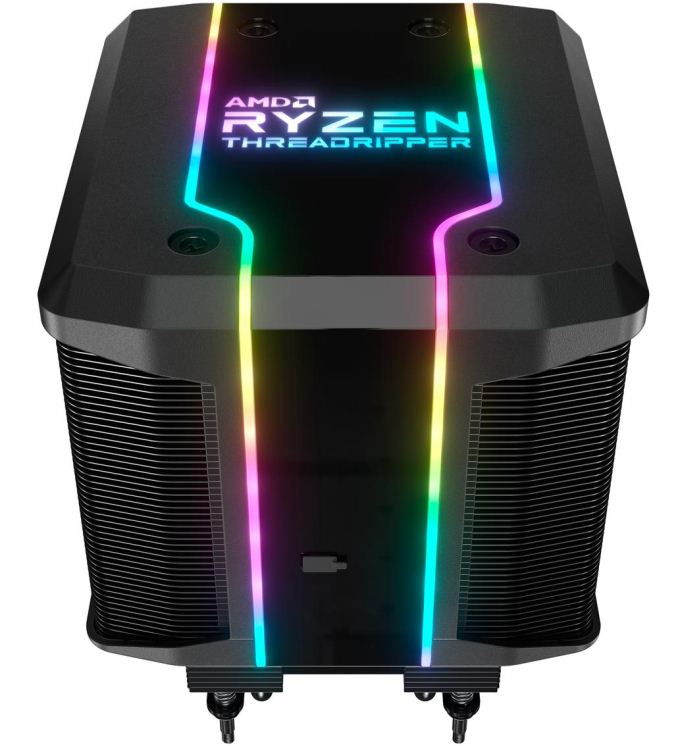
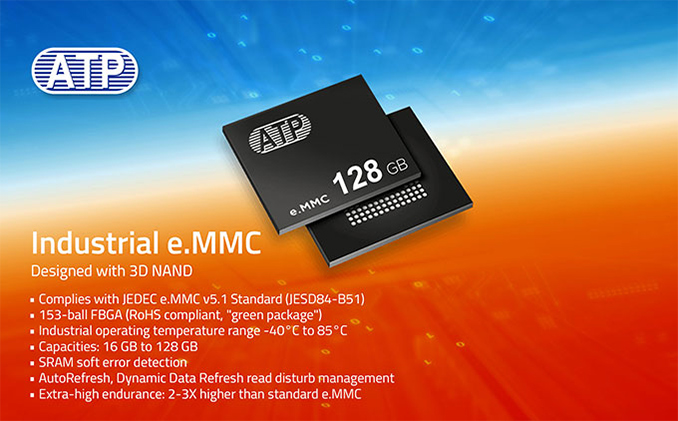
















Bookmarks